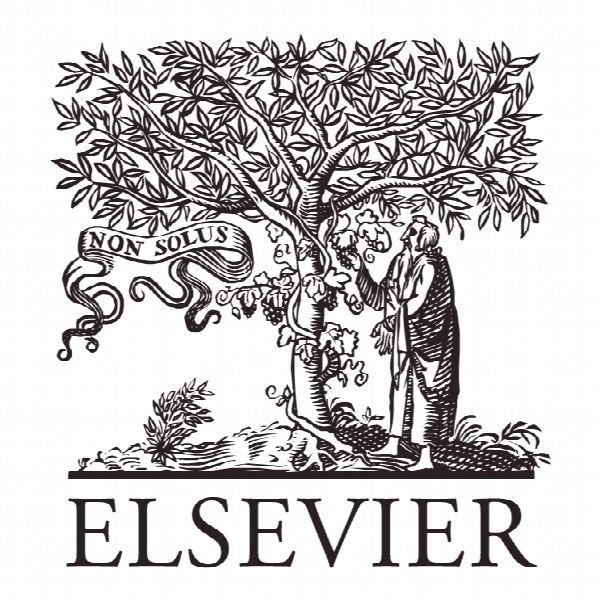ارتباطات داخلی و رفتارهای خدمات اجتماعی خیرخواهانه کارکنان خط مقدم: بررسی مکانیزم های واسطه Internal communication and prosocial service behaviors of front-line employees: Investigating mediating mechanisms
- نوع فایل : کتاب
- زبان : انگلیسی
- ناشر : Elsevier
- چاپ و سال / کشور: 2017
توضیحات
رشته های مرتبط مدیریت
گرایش های مرتبط بازاریابی
مجله تحقیقات بازاریابی – Journal of Business Research
دانشگاه دانشکده کسب و کار آستون، آستون، بیرمنگام، انگلستان
نشریه نشریه الزویر
گرایش های مرتبط بازاریابی
مجله تحقیقات بازاریابی – Journal of Business Research
دانشگاه دانشکده کسب و کار آستون، آستون، بیرمنگام، انگلستان
نشریه نشریه الزویر
Description
1. Introduction It is well established within the services marketing and management literature that front-line employee (FLE) prosocial service behaviors (PSBs) strongly influence customers perceptions of service quality and satisfaction (e.g. Bettencourt & Brown, 1997; Bettencourt, Brown, & MacKenzie, 2005), which, in turn, affect organizational effectiveness and performance (Podsakoff, Whiting, Podsakoff, & Blume, 2009). PSBs are defined as “helpful behaviors of employees directed towards the organization or other individuals” (Bettencourt & Brown, 1997, p. 41). As PSBs are discretionary behaviors that go beyond formal role requirements, and are found to be positively associated with both organizational and customer relationship performance (Bettencourt & Brown, 1997), these are highly valued by service firms. Given the significance of PSBs, (Podsakoff et al., 2009), more research is called for to understand what motivates these, and how management can help to promote PSBs among FLEs (Bettencourt & Brown, 2003; Podsakoff et al., 2009; Wintericht, Aquino, Mittal, & Swartz, 2013). Considering that different types of FLE behaviors have been shown to have different antecedents (MacKenzie, Podsakoff, & Ahearne, 1998; Podsakoff & MacKenzie, 1997), more research into different dimensions of PSBs is also warranted (Bettencourt & Brown, 2003; Podsakoff & MacKenzie, 1997). However, relatively few studies have addressed this gap in literature (excluding for instance Ackfeldt & Wong, 2006; Bettencourt et al., 2005; Bettencourt & Brown, 1997, 2003; Lages, 2012). In view of the above, literature suggests that research investigating antecedents of prosocial behaviors mainly falls into two broad categories: one that is focused on studying individual-difference variables (such as dispositions or job attitudes), and the other that studies contextual variables (Wintericht et al., 2013). However, research in both these categories has been ‘almost entirely’ focused on motivational variables (Dudley & Cortina, 2008), neglecting other important variables like knowledge and communication. This is because motivation has been regarded as the “overriding proximal predictor of citizenship performance” in literature (Dudley & Cortina, 2008, p.1249). Thus, more research investigating predictors, especially situational predictors (Rank, Carsten, Unger, & Spector, 2007), that could facilitate the effective performance of such behaviors has been repeatedly called for (Dudley & Cortina, 2008; Lee, Nam, Park, & Lee, 2006; Rank et al., 2007). In this context, although a few studies have looked at the impact of management interventions like empowerment (Ackfeldt & Wong, 2006), training, rewards (Lee et al., 2006), fairness perceptions (Bettencourt & Brown, 1997), task variables (Piccolo & Colquitt, 2006) and leadership (De Cremer, Mayer, van Dijke, Schouten, & Bardes, 2009; Rank et al., 2007), research investigating the influence of internal communication on FLE PSBs remains extremely limited (Ackfeldt & Wong, 2006). Literature suggests four levels of internal communication: internal line management communication, internal team peer communication, internal project peer communication and internal corporate communication (see Welch & Jackson, 2007). While most empirical work in services literature has focused mainly on internal line management communication in the form of either supervisor communication practices or feedback (Johlke & Duhan, 2000, 2001; Johlke, Duhan, Howell, & Wilkes, 2000; Yoo, Flaherty, & Frankwick, 2014), it is important to study internal organizational communication (also known as internal corporate communication (Welch & Jackson, 2007) or management communication (Ng, Butts, Vandenberg, DeJoy, & Wilson, 2006)), as literature highlights “the need for organizations to recognize employees as a distinct public worthy of individualized attention” (Mishra et al., 2014, p.185). Because internal communication between the organization and its employees helps to engage employees’ “intellectual and creative assets to produce value” (Quirke, 2008, p. 15), instills a sense of ownership in employees (Soupata, 2005), enhances employees’ psychological attachment towards the organization and encourages them to contribute to organizational goals (Rousseau, 1998), it is being increasingly recognized as “a vital issue requiring further research” (Hargie & Tourish, 2009, p. 419). Although internal marketing literature conceptually talks about the benefits of internal organizational communication for FLE performance (George, 1990; Rafiq & Ahmed, 2000), empirical research verifying and testing its significance remains negligible (Ng et al., 2006; Tkalac Verčič, Verčič, & Sriramesh, 2012), especially for frontline PSBs as “extant services research focuses far more on managing customer relationships than on the dynamics of effectively supporting and developing the service personnel who interact with customers” (Ellinger et al., 2013, p.1124). As such, empirical research examining the significance and role of internal communication is warranted to help organizations understand how internal communication could foster an effective internal service climate that encourages and supports prosocial behaviors among FLEs, which are crucial for any service organization’s success. Addressing such gaps in literature, we focus on organization’s internal communication (hereinafter referred to as ‘internal communication’) in this study, which is defined as “the extent to which organizations provide organization-related information to their employees, such as information about changes in organizational policies and procedures, financial results, employee and group successes, and customer feedback” (Ng et al., 2006, pp. 476–77).


